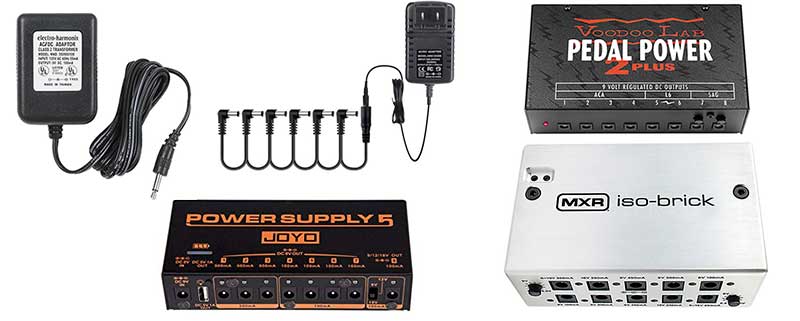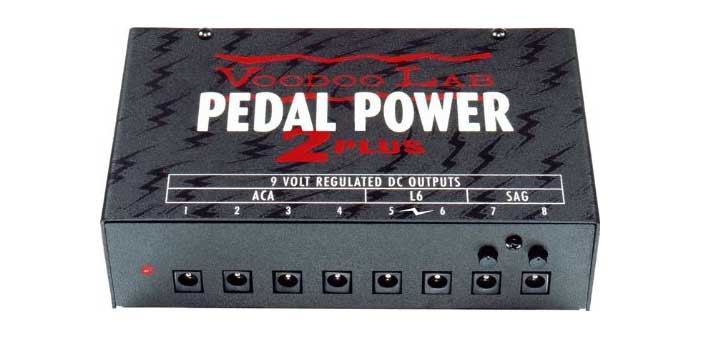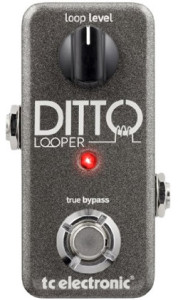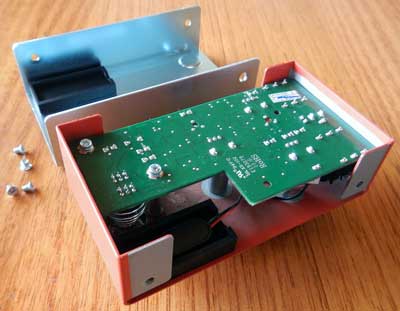If you’re just getting started with guitar pedals, you might be wondering how to power them. There are a lot of different types of guitar pedals and they’re not all the same when it comes to powering them.
In this guide, I’ll answer the most common questions guitarists have about powering guitar pedals. Whether you’re just starting out learning guitar or you’re unsure about a pedal’s power requirements, you’ll find the answer in this guide.
By the end of this guide, you will be an expert in how to power guitar pedals. You will learn:
- The different types of power requirements for guitar pedals
- How to choose between batteries or external power supplies
- The different types of external power supplies and which to use for your pedals
- How to power individual guitar pedals or an entire pedalboard
Every guitar pedal has a specific power requirement, so read through this guide to learn everything you would want to know about powering your guitar pedals.
Voltage, Current, and Polarity
Before we look at the different types of power supplies you can use to power your guitar pedals, we need to take a look at three very important topics: voltage, current, and polarity. To properly power your guitar pedals, you need to get all three of these things right.
Let’s go through each one so you know exactly what to look for when powering your guitar pedals.
Voltage and Guitar Pedals
Voltage is a measure of potential energy in a circuit. As a guitarist, all you need to know is that you need to match the Voltage (V) of the pedal to the power supply you use.
Most guitar pedals require 9V power (even many multi-effects pedalboards). If you have a guitar pedal with 9V written on it, make sure you use a 9V power supply or battery.
Keep in mind that while most guitar pedals use 9V, there are pedals out there that require a higher voltage. If you have a pedal that requires 12V, 18V, or even 24V, make sure the power supply you use matches that voltage.
Some guitar pedals accept a range of voltages, which I’ll discuss in detail in a different guide. For example, the Fulltone OCD allows you to connect any voltage from 9-18V.
Note: the key point to remember is that you must match the voltage the pedal accepts to the voltage the power supply delivers. Providing the wrong voltage to your guitar pedal can potentially damage it.
Current and Guitar Pedals
Think of current as the flow of electricity in a circuit. A high current means a lot of electricity is flowing through the circuit. Current is measured in Amps (A).
Most guitar pedals only draw a small amount of current. For example, you might see the label “100mA” on the back of a guitar pedal. This means the pedal draws 100 milliamps of power. A Milliamp is one-thousandth of an Amp).
When matching a power supply to your guitar pedal, the current requirement is a bit different than the voltage requirement. With Voltage, you need to match the voltage (eg: 9V power with 9V pedal). With current, you need to make sure the power supply has enough current.
So if your guitar pedal draws 200mA of power, you need to use a power supply that provides at least 200mA of power.
If the power supply is lower than the pedal’s requirement (eg: 100mA power supply with a 200mA pedal) it’s not enough and you might burn out the power supply if you try to connect it to your power.
If the power supply matches the current requirements (eg: 200mA power supply with a 200mA pedal) then you can use it as long as you don’t try to daisy chain more pedals with that supply.
If the power supply has a higher current rating than the pedal (eg: 500mA power supply with a 200mA pedal) it will be perfectly fine to use. You may also be able to use the power supply to daisy chain more pedals.
The current value on a power supply is the maximum current the power supply can provide. So there’s no problem connecting a 100mA pedal to a 1000mA power supply because the pedal will only draw 100mA of power.
Note: the key point to remember is that the power supply you use must provide at least the same current as the guitar pedal requires. It’s perfectly fine if the power supply’s current rating is far higher than the pedal’s current requirements. The pedal will only draw what it needs.
Polarity and Guitar Pedals
Polarity is just the technical term for positive and negative. When you connect a power supply to your guitar pedal, you need to make sure the positive and negative connections match up properly.
You can see what the polarity of the power jack is on your pedal with the symbols next to the jack. The symbol shows whether the tip of the jack is negative (-) or positive (+). This is important to know as plugging the wrong power source into your pedal can fry it.
This is what the symbol looks like for power polarity:

The power jack provides power using a pin and sleeve. The dot in the center of the diagram tells use the polarity of the pin. Most guitar pedals will have a negative center pin so you will see the negative polarity symbol on your pedal. All you need to do is make sure the external power supply also uses a negative center pin and you’ll be fine.
If you have a power adaptor at home, you’ll be able to check whether it uses a negative or positive center pin by looking for the same symbol on the adaptor. Here is a close-up of the back of a power adaptor with the output symbol highlighted:

You can see that this power adaptor uses a negative center pin. That means it will be compatible with most guitar pedals but we still need to check the voltage and current ratings before we plug the pedal in.
You can also see from the above photo that the power supply delivers 9V to the pedal and has a maximum current of 300mA. With all of this information, you can figure out whether the power supply is compatible with your guitar pedal or not.
Note: the key point to remember is that the polarity of the power supply must match the polarity of the guitar pedal. Connecting a power supply with the wrong polarity will damage your gear.
Ways You Can Power Guitar Pedals
Some guitar pedals use batteries, other pedals use external power supplies and some pedals accept both options. The right option for you depends on your pedals and the number of pedals you have. Let’s start by looking at the different types of power requirements and what to look for in your pedal to figure out what it needs.

The above photo shows the different methods you might be able to use to power your guitar pedals. Let’s go through each one so you know what each method involves and whether it’s right for you or not.
Using External Power Supplies With Your Guitar Pedals
Most guitar pedals allow you to power it with an external power supply. An external power supply is a unit that plugs into your wall’s outlet and converts that power to something the guitar pedal can use.
The below photo shows a couple of examples of what external power supplies look like. Each type of power supply will suit different guitarists so I’ll explain each type later on in detail.

To figure out if your guitar pedals can accept external power, all you need to do is look for a power input jack on your pedal. The below photos show examples of what to look for on your pedal:

To correctly match an external power supply to your pedal, we need to check three things as explained above: voltage, current, and polarity.
Your pedal will label the voltage and current requirements somewhere on the back or next to the power jack. While most pedals use 9V, you should still check each pedal to make sure you haven’t bought a rarer pedal that uses 12V, 18V or 24V.
Remember that the power supply you use should provide at least the same amount of current as the pedal draws. So if your pedal has 100mA as the current draw, your power supply must provide at least 100mA. It’s perfectly fine if your power supply has a higher current written on it.
Some pedals don’t write the current draw on the pedal. This is usually because it draws so little current that it’s not going to be a problem with any power supply. Some pedals draw as little as 5mA so there’s no point writing it as a requirement on the pedal. If your pedal doesn’t mention the current, you can always check the manual if you’re worried about your power supply.
Finally, it’s also important to check the polarity of the pedal. Most guitar pedals will use a negative center pin, so look for the polarity symbol on your pedal and make sure it matches your external power supply.
If your power supply matches these three requirements, you’re good to go.
Types of External Power Supplies
Let’s look at the two main types of power supplies you may use with your guitar pedals.
The first type is a basic DC adaptor:

Many guitar pedals come with this type of adaptor so you can start using your pedal straight away. These adaptors are great for simple pedalboards. If you only use one pedal, then this is the perfect choice to power it.
If you use 2-5 pedals, you might be able to use the one adaptor to power all of your pedals using daisy chaining. Daisy chaining is a simple way of connecting multiple guitar pedals to the one power source. Read through this guide to learn how to daisy chain your guitar pedals.
These power supplies are cheap, compact, and simple to use when you only have a small number of pedals.
If you have a decent sized pedalboard, you could use a few of these supplies to power all of your pedals. But there’s a far better option you should consider.
The second type of external power supply is a dedicated power supply:

These larger brick-shaped power supplies are designed for guitarists who have a large pedalboard or need different power requirements for different pedals.
Instead of daisy chaining all your pedals together with an adaptor, you can plug all of your pedals directly into a dedicated power supply.
The big advantage of using a dedicated power supply is thanks to isolated connections. When you daisy chain pedals together, every pedal’s circuits are connected to each other.
This can cause some problems as some pedal circuits are ‘dirtier’ than others (eg: vintage fuzz pedals). Connecting pedals together with the same non-isolated power supply can cause noise in your tone. You might hear hum, buzzing, or random noises in the background of your tone. Not good.
Isolated power supplies prevent this issue because each connection is completely separated from each other. You can connect a vintage fuzz pedal to an isolated power supply and it won’t cause problems in your signal.
To learn more about dedicated power supplies, check out my review of the Voodoo Lab Pedal Power 2 Plus. This is without a doubt the most popular dedicated power supply available today. There are plenty of alternatives, but this one is worth checking out first.
Using Batteries With Your Guitar Pedals
While external power supplies have many advantages, some guitarists won’t need them at all. If you only use a small number of pedals, you may prefer to use batteries.
There are a few advantages of using batteries to power your guitar pedals. Each pedal is completely isolated from each other (unlike daisy chaining) so you get no AC noise or signal issues.
Batteries also give you the freedom to position your pedals wherever you want without needing to run a power cable to the pedal. This can be handy for live performances, band practice sessions, or just playing at home.
The downside of using batteries is that they die. The last thing you would want during a performance is for a battery to die and leave you scrambling for a replacement. Constantly replacing drained batteries can also build up in cost if you play guitar a lot.
For some guitar pedals, batteries are the only option. If your pedal doesn’t have a power jack, then it requires batteries. Some pedals accept both batteries and external power.
Other pedals don’t accept batteries at all. Some guitar pedals are so tiny that it’s obvious a battery wouldn’t fit inside of it:

Keep this in mind if you’re considering buying one of these compact pedals. They work great when part of a pedalboard as they take up little space, but they require external power.
Some guitar pedals have a battery compartment on the back of the pedal, which makes it easy to tell if the pedal accepts batteries. The back of this wah has an easily accessible battery compartment:

These pedals are great because it’s quick and easy to change batteries. Other pedals make things a bit harder by requiring you to unscrew the backplate to access the battery compartment like the below pedal:

Many guitarists don’t even realize that their pedals could be used with batteries for this reason. If you’re unsure whether your pedal accepts a battery or not, try searching online before you open up your pedal. BOSS stompboxes for example house the battery under the foot pad.
When choosing a battery for your pedal, the choice is between standard 9V batteries or rechargeable batteries.
I recommend starting out with normal 9V batteries to see how long it takes for them to drain. If a single 9V battery lasts for months and months, then stick to normal batteries. If you find the battery drains quickly, then you might want to consider rechargeable batteries.
The advantage of rechargeable batteries is that you should save money over time. Instead of constantly buying and throwing out batteries, you have two or three rechargeables you swap in and out.
Some guitarists love using rechargeable batteries while other guitarists hate them. Try using normal batteries first before you spend the money on rechargeables and see what you think.
How to Choose a Guitar Pedal Power Supply
Now that you’ve read through the different types of power supplies, let’s figure out what type is best for you.
Here are some tips on how to find the right power supply for your needs:
- Plan out your pedalboard. Will you be adding more pedals over time or will you stick to what you have? Make sure your power supply will cover you now and in the future. You don’t want to be forced to buy more power supplies just because you added a pedal to your rig.
- Check each pedal’s power requirements. If all pedals use the same voltage
- Add up the current draw on every pedal. This is handy to know if you’re thinking about daisy chaining. If you have 4 pedals and they each draw 100mA, you need to make sure the power supply provides at least 400mA to work with daisy chaining
- If you’re mixing vintage and modern pedals, get an isolated power supply. Vintage pedals can cause a lot of interference and signal noise if not properly isolated.
- Don’t buy cheap power supplies. You get what you pay for with power supplies. While some cheap power supplies work perfectly fine, many run the risk of bringing in signal noise, hum, or a potential fire hazard. Some pedals cost hundreds so don’t risk ruining them with a dodgy power supply.
- Simple is best. If you only have a couple of pedals, use an adaptor and daisy chain the pedals together. If you have a large pedalboard, buy a dedicated power supply and mount it on a proper pedalboard. If you only have one pedal, you might prefer sticking to using a battery.
Whatever power supply you buy, make sure you think about what you would need to do if you bought one more pedal. Would you need to buy another supply to run it? Or would you be able to daisy chain your existing power supply? Buy something that gives you room to grow your pedalboard if you choose to in the future.
Powering Your Guitar Pedals FAQ
The above guide gives you the main details you would want to know to power your guitar pedals. But if you want to learn more, the below questions will cover a lot of important details on power supplies.
What is the best pedal power supply?
The best power supply for your guitar pedals is one that perfectly matches your needs. If you only have one pedal, then an adaptor will work best. If you have a large pedalboard, a dedicated power supply such as the Voodoo Lab Pedal Power 2 Plus will be the best choice.
Read through the above advice and you’ll be able to find the best type of power supply for your needs.
What is a regulated power supply?
A regulated power supply is a power supply that guarantees it produces the voltage as stated on the unit. This means if you buy a regulated 9V power supply, it will produce 9V no matter how many pedals you connect it to (eg: using daisy chaining).
Regulated power supplies are highly recommended and will ensure you avoid a lot of issues with pedals not receiving the correct voltage.
What is an unregulated power supply?
An unregulated power supply is a power supply that does not provide a stable voltage. These power supplies give you a fixed current, which means the voltage can vary.
While an unregulated power supply might be fine if you’re using it to power one guitar pedal, it can quickly lead to problems. If you daisy chain another pedal, the voltage will drop and may cause issues in your tone.
Unregulated power supplies may be cheap, but they’re not recommended for guitar pedals.
What is an isolated power supply?
An isolated power supply keeps each guitar pedal on a completely separate circuit. Isolated power supplies prevent the pedals from interfering with each other which can cause signal noise. Dedicated power supplies like the Voodoo Lab Pedal Power 2 Plus provides isolated power connections.
An isolated power supply is highly recommended on large pedalboards or on pedalboards that mix modern and vintage pedals. Many vintage pedals are extremely noisy in their electronics, so an isolated power supply will prevent a noisy pedal from causing issues.
How long does a 9V battery last in a guitar pedal?
How long a battery lasts in a guitar pedal depends on how often you play, the current the pedal draws from the battery, and the quality of the battery. This means the real answer could be anywhere from a week to a year. Some pedals drain batteries fast, while others only draw a small amount of power and can last for a year or more without needing a change.
As a 9V battery drains, you might start hearing a change in your tone. The signal might start to break up or the effect may not sound quite right. Some overdrive pedals sound better when the battery is half drained, while most pedals sound worse.
When you start hearing a change in your tone when the pedal is active, it’s a sign the battery is running low and will die soon.
Can you use a 12v adaptor for a 9v guitar pedal?
In most cases, powering a 9V guitar pedal with a 12V battery is a bad idea. When a pedal says it requires 9V, don’t use a 12V power supply or you risk ruining the pedal. Some guitar pedals accept more than 9V such as the Fulltone OCD, but these type of pedals are fairly uncommon. Unless you’re completely sure the pedal will accept 12V, don’t do it. Buy a 9V adaptor.
As this is such an important thing to get right, if you’re considering using a 12v adapter, read through this guide first.
How does a daisy chain work?
A daisy chain allows you to use one power supply to power all of your pedals. This works by using a simple daisy chain connector lead, which jumps from pedal to pedal.
Read through this guide to learn more about daisy chaining your pedals.
